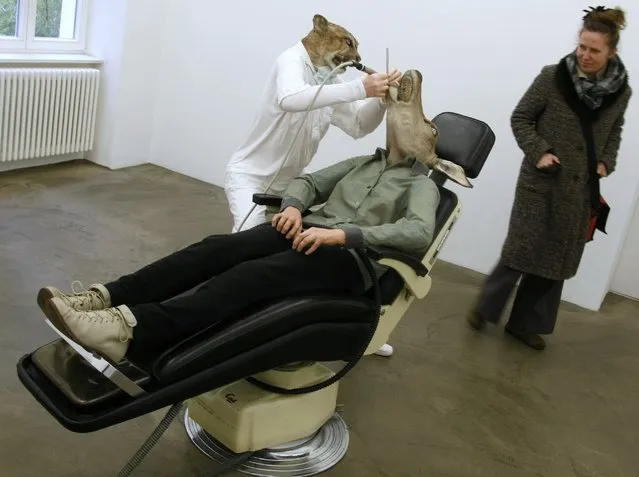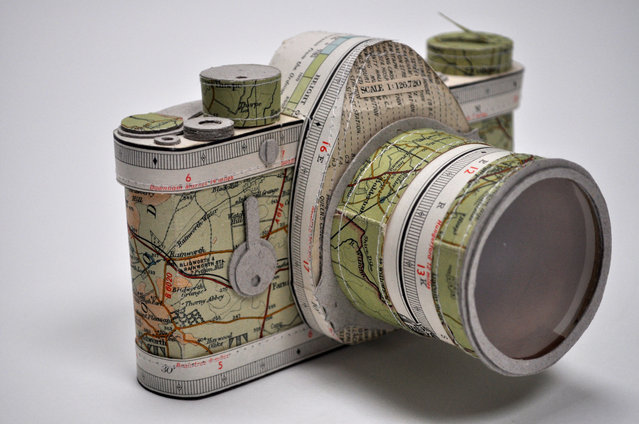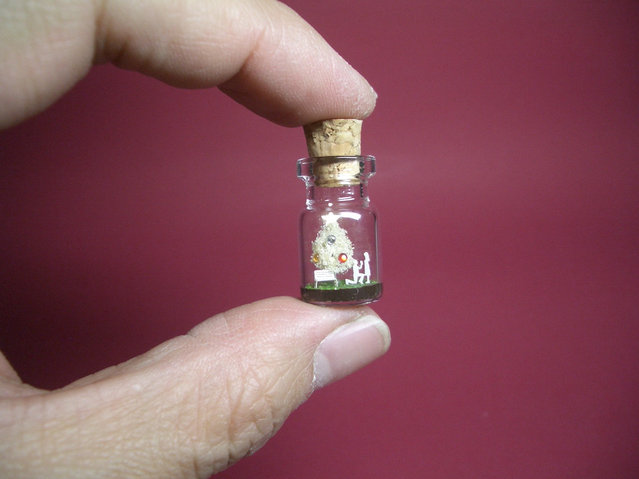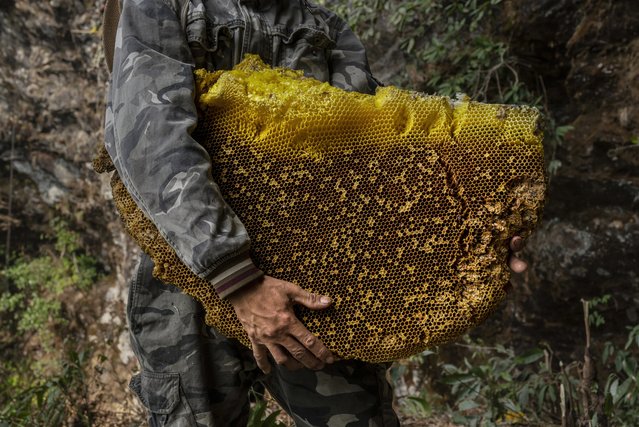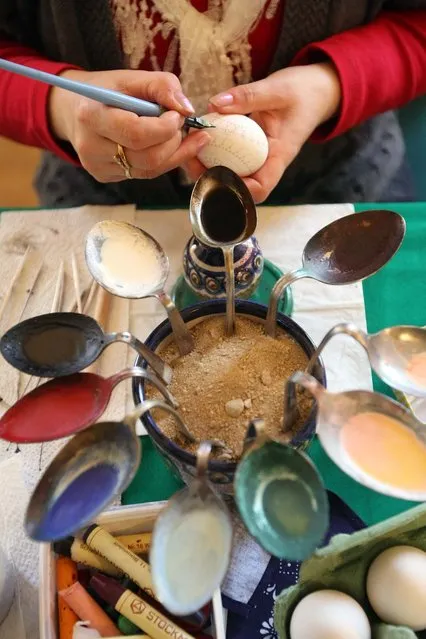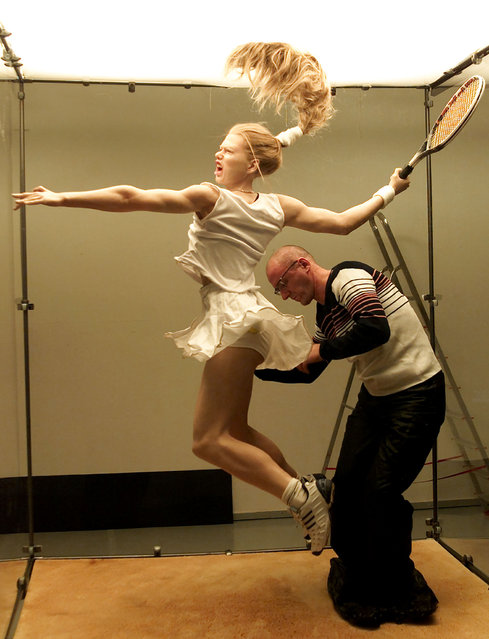
Russian artist Oleg Kulik installs the wax figure resembling to Russian tennis star Anna Kournikova at his new exhibition project in Moscow on October 19, 2002. Kulik plans soon to fill his museum with figures of strong and beautiful women like Bjork and Madonna in unexpected poses. (Photo by Alexander Natruskin/Reuters)
23 Jun 2022 04:17:00,post received
0 comments


